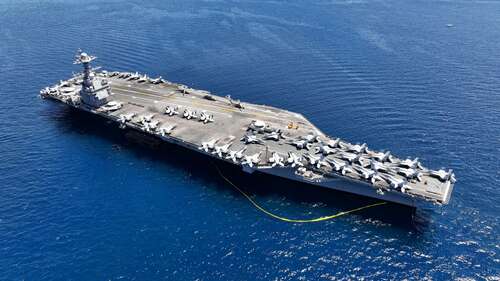
While it’s quite impressive that the USS Gerald R. Ford can cut through water like magic, the same principles keeping that striking aircraft carrier mostly above water can be applied to something much smaller, like a speed boat.
There are two primary factors that determine whether a boat will sink or float: gravity and density. Gravity is a constant on Earth. Though it has a much bigger role in the universe, on a small scale, it keeps us from floating out into the atmosphere when we jump. Since the ground is a solid, gravity has a limit to how much it can pull us down. However, water is a different story.
The reason why we’re able to float on our backs in water can be attributed to a force known as buoyancy, which is, in effect, gravity acting upon the object with the highest density. Generally speaking, a high-density object will sink as it’s more dense than water. When applied to the Nimitz-class carrier, that doesn’t make sense, though, right? How could a 90,000-ton object be lighter than water? The reality is that if that weight occupied a smaller space, it wouldn’t stay afloat so effortlessly.

